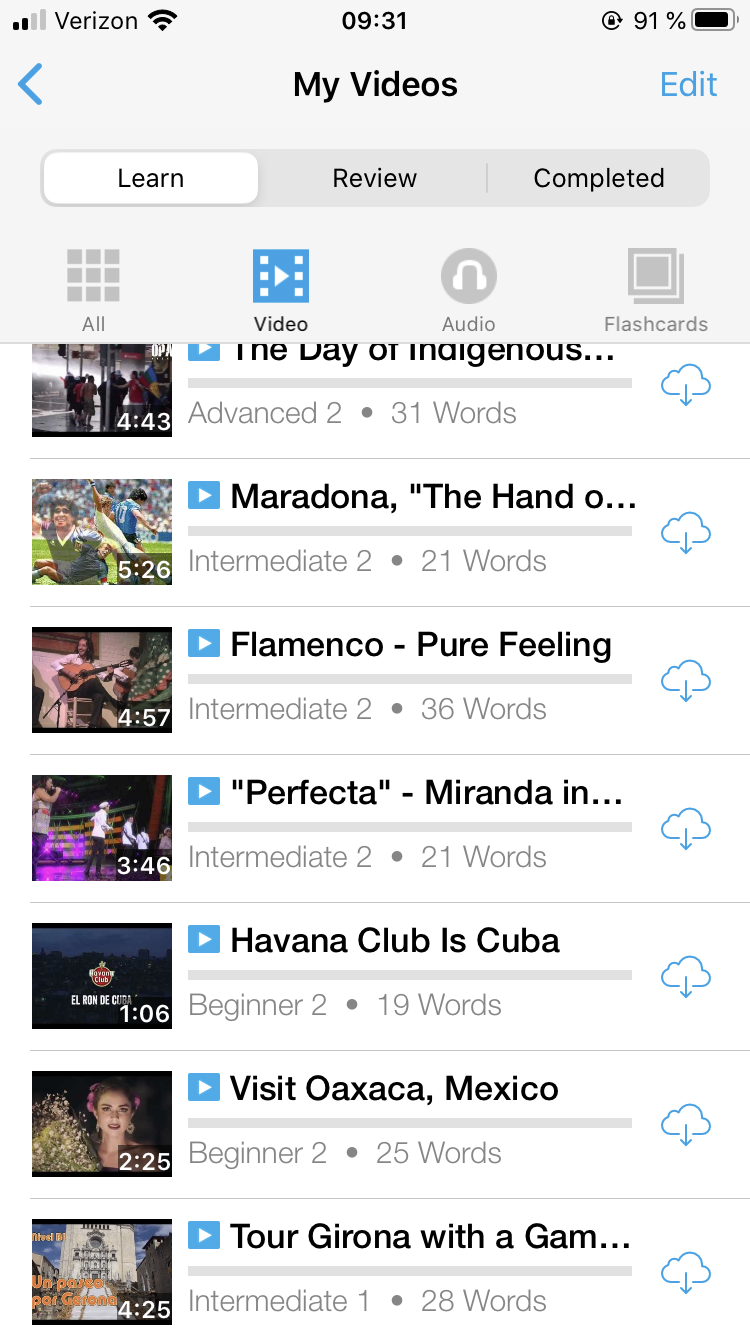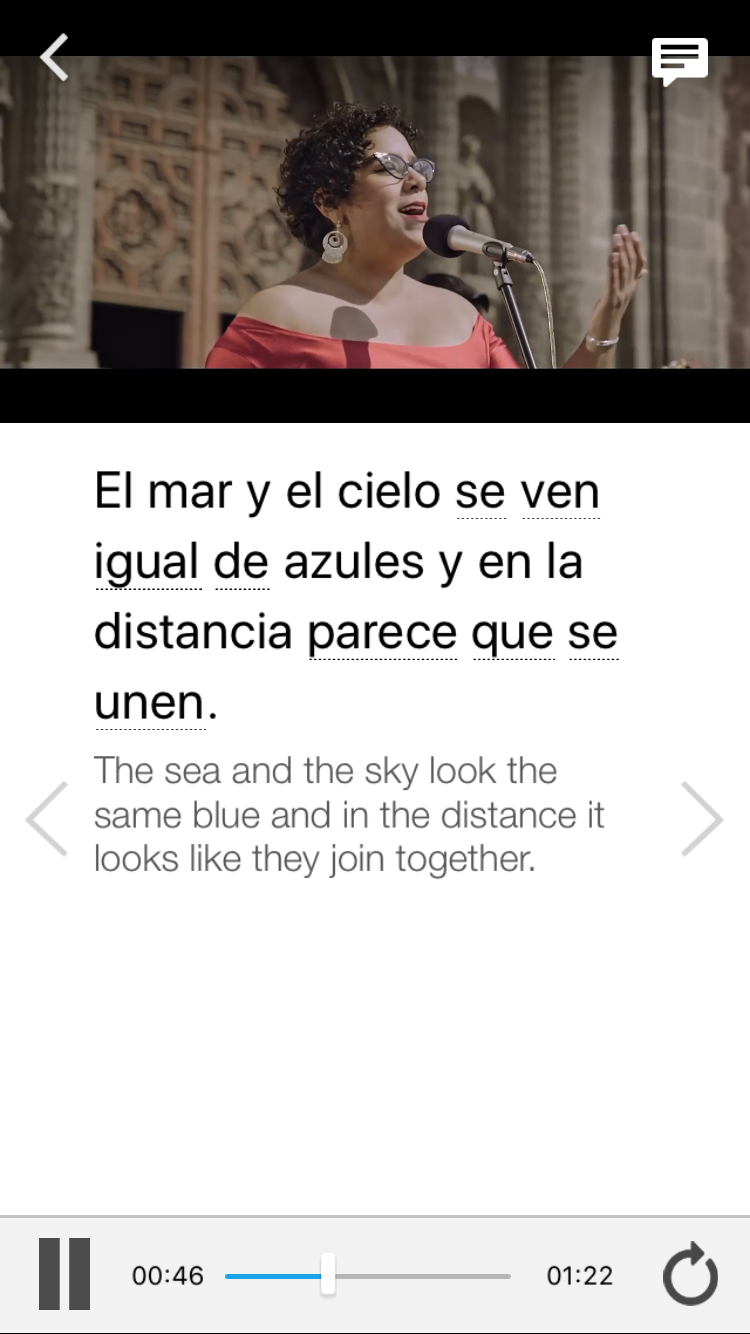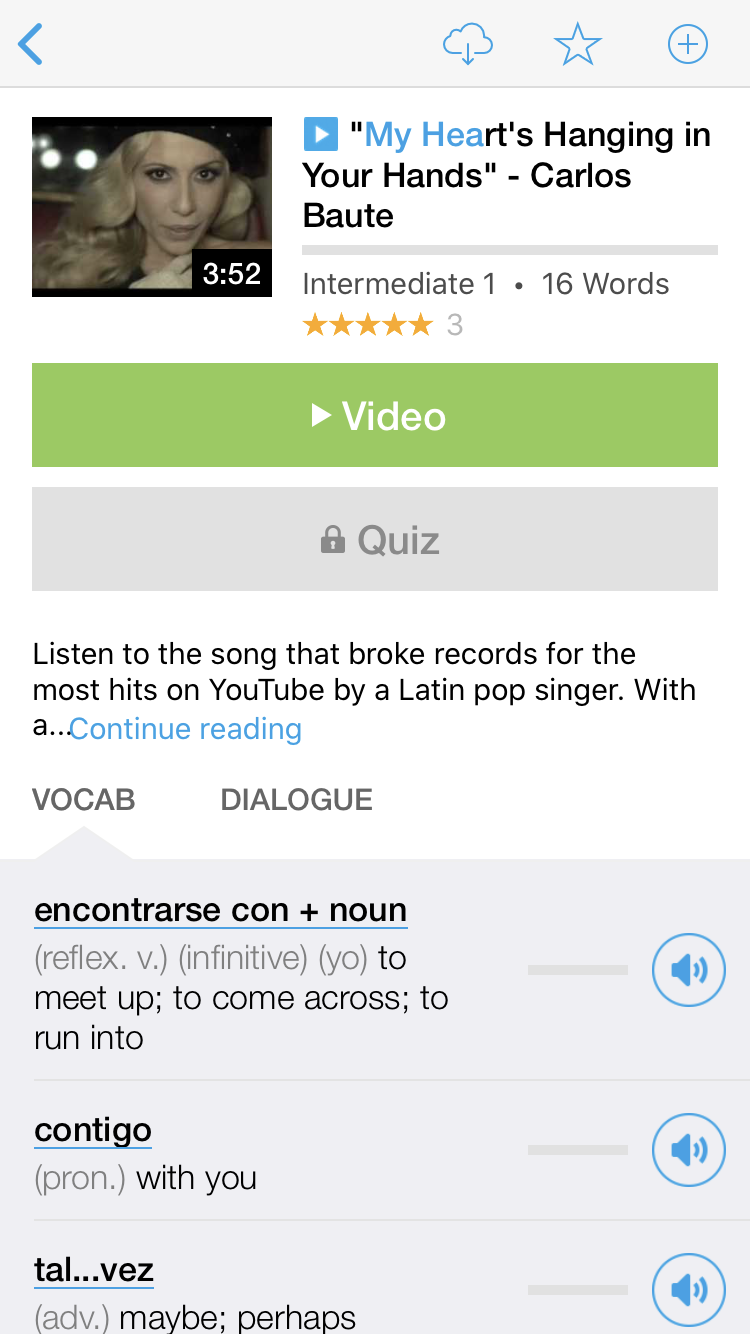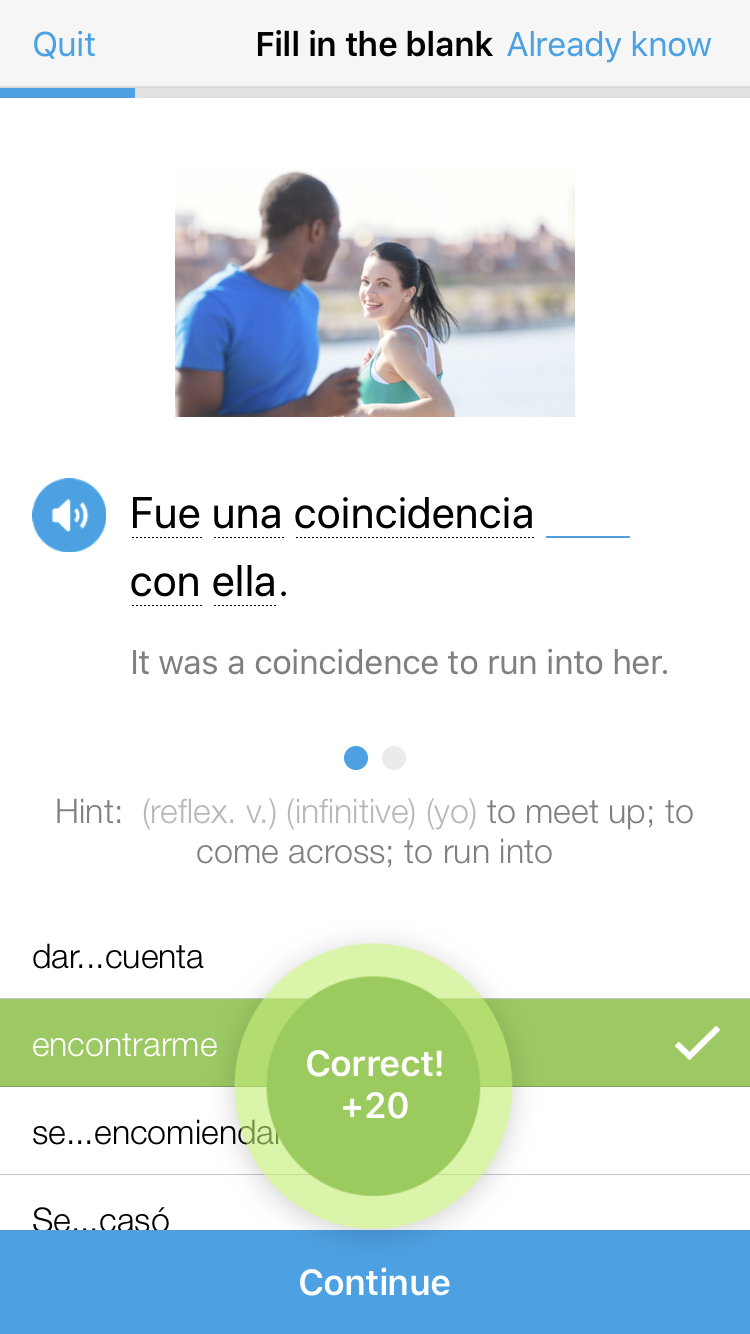
Riddles make for tricky brain teasers in any language, and these Spanish riddles will have you thinking outside the box while practicing your language skills.
You’ll improve your grammar and vocabulary skills by puzzling over these riddles either as part of a study session, or just for fun.
All of the answers are at the bottom of the page—how many can you solve without looking?
Contents
- Fun Spanish Riddles for Learners
-
- 1. Negra por dentro, negra por fuera, es mi corazón negra madera.
- 2. Ave me llaman a veces y es llana mi condición.
- 3. Tengo algo en mi mano. Oro no es. Plata no es. ¿Qué es?
- 4. Una cajita chiquita, blanca como la cal: todos la saben abrir, nadie la sabe cerrar.
- 5. Fríos, muy fríos estamos y con nuestros sabores a los niños animamos.
- 6. Cuanto más caliente, más fresco y crujiente.
- 7. Blanca por dentro, verde por fuera. Si quieres que te lo diga, espera.
- 8. Agua pasa por mi casa, cate de mi corazón.
- 9. No toma té, ni toma café y está colorado; dime, ¿qué es?
- 10. Tengo cabeza redonda, sin nariz, ojos ni frente, y mi cuerpo se compone tan sólo de blancos dientes.
- 11. Miro al sol sin ser caracol; giro sin fin sin ser bailarín.
- 12. Chiquita como ratón, cuida la casa como león.
- 13. Tengo agujas y no sé coser; tengo números y no sé leer.
- 14. ¿Quién será esa, quién será esa, que de día se va y de noche regresa?
- 15. Siempre quieto y en un lugar, todos me quieren mirar.
- Spanish Riddle Answers
- And One More Thing…
Download:
This blog post is available as a convenient and portable PDF that you
can take anywhere.
Click here to get a copy. (Download)
Fun Spanish Riddles for Learners
1. Negra por dentro, negra por fuera, es mi corazón negra madera.
English: Black on the inside, black on the outside, my heart is black wood.
This is a great starter riddle because it translates pretty seamlessly into English. Note that we’re talking about food here.
2. Ave me llaman a veces y es llana mi condición.
English: Sometimes they call me bird and my condition is plain.
In this case, English didn’t help us much at all. Take a look at this riddle really closely. Do you see how the ll is repeated multiple times? That’s a clue that your answer has an ll in it.
Now, since this riddle is about food, not birds, you can also assume that ave is a clue too. I won’t help you anymore or I’ll ruin the fun on this one.
3. Tengo algo en mi mano. Oro no es. Plata no es. ¿Qué es?
English: I have something in my hand. It isn’t gold. It isn’t silver. What is it?
Spoiler alert, it isn’t bronze. The answer is in the riddle.
In Spanish, there are a lot of words that look alike and sound alike but have completely different meanings. The answer is literally written in the riddle. Start combining and pulling apart words to see if it makes another word in Spanish.
4. Una cajita chiquita, blanca como la cal: todos la saben abrir, nadie la sabe cerrar.
English: A little box, as white as lime: everyone knows how to open it, no one knows how to close it.
I’m not going to give you any clues on this one. I mean, I’ve actually already given you a clue about it if you were paying close attention. Unlike some of the others, the answer isn’t written in the riddle. Think outside the box (pun definitely intended).
5. Fríos, muy fríos estamos y con nuestros sabores a los niños animamos.
English: Cold, we’re very cold, and with our flavors, we excite the children.
Like riddle #4, there’s no real key to cracking this one. Just take a look at the hints and read it over in English. This is a great example of a riddle that works in multiple languages because it doesn’t depend on specific grammatical or vernacular clues.
6. Cuanto más caliente, más fresco y crujiente.
English: The hotter it is, the fresher and crunchier it is.
This is a great example of a word with double meaning. Fresco in Spanish can mean “fresh” or “crisp.” In this case, crisp usually refers to the weather (the crisp air).
Fresco is usually used to describe if the air is a little brisk or cooler. So, in Spanish, this riddle is playing on the juxtaposition between caliente (hot) and fresco (crisp). But that’s where the hint lies.
7. Blanca por dentro, verde por fuera. Si quieres que te lo diga, espera.
English: White on the inside, green on the outside. If you want, I’ll tell you what it is, wait.
This riddle may seem like it’s missing something since it tells you to wait at the end, but it isn’t. Everything you need is right in front of you.
Like riddle #3, try playing around with the different words. Really dig deep, this one is sneaky. Once you find it, if you’re like me, you’ll feel very victorious and clever. This is a great one to tell native speakers, it’s just that sneaky!
8. Agua pasa por mi casa, cate de mi corazón.
English: Water runs through my house, my heart’s bash.
Okay, bear with me on this one. As you probably guessed, the answer to this riddle is hidden inside this seemingly nonsensical sentence.
Not sure yet? Try to keep repeating it nonstop. You’ll be surprised to see how it starts to make sense!
9. No toma té, ni toma café y está colorado; dime, ¿qué es?
English: It doesn’t drink tea, nor coffee, and it’s red, tell me: who is it?
This riddle almost doubles as a tongue twister with all of the T noises in that first line. As a matter of fact, why don’t you read it aloud like a tongue twister? Read it as fast as you can. Faster. Faster. Do you hear the answer now?
10. Tengo cabeza redonda, sin nariz, ojos ni frente, y mi cuerpo se compone tan sólo de blancos dientes.
English: I have a round head, without a nose, eyes or forehead, and my body is made only of white teeth.
This is another riddle that works well in English and Spanish. You can make your friends scratch their heads in two languages with this one. What’s a fruit made completely of white teeth? That sounds dangerous to me.
It helps to know that diente in Spanish typically refers to one small unit of the mysterious thing in question.
11. Miro al sol sin ser caracol; giro sin fin sin ser bailarín.
English: I look at the sun without being a snail; I spin endlessly without being a dancer.
Rhymes aside, think about it: “look at the sun,” “spin endlessly” … Sounds familiar, doesn’t it?
12. Chiquita como ratón, cuida la casa como león.
English: Tiny as a mouse, it guards the house like a lion.
This one is a great example of riddles for common household items. Can you guess which one we’re talking about here?
13. Tengo agujas y no sé coser; tengo números y no sé leer.
English:I have needles and I can’t sew; I have numbers and I can’t read.
I think you know the answer by now. If not, just know: agujas can also mean “hands” in some cases…
14. ¿Quién será esa, quién será esa, que de día se va y de noche regresa?
English: Who is she, who is she, who goes away by day and comes back by night?
This may be a little too easy, but the perfect rhyme in the riddle definitely makes it a pretty elegant one!
One more before we go:
15. Siempre quieto y en un lugar, todos me quieren mirar.
English: Always still and in one place, everyone wants to look at me.
Spanish Riddle Answers
1. Aceituna
(Olive)
2. Avellana
(Hazelnut)
The riddle uses the words ave and llana which are the two words found embedded within avellana.
3. Plátano
(Plantain/Banana)
Plantains have nothing to do with gold or silver. But when you combine the words plata and no, you get to plantain. Who would’ve thought?
4. Huevo
(Egg)
5. Helado
(Ice Cream)
6. Pan
(Bread)
7. Pera
(Pear)
Espera, as I mentioned above, means “wait.” But es pera means “it is a pear.” Told you this one was sneaky.
8. Aguacate
(Avocado).
9. Tomate
(Tomato)
Like the others, you reach this answer by throwing two words together. Toma té, when smushed into one word, leads you to tomate.
10. Ajo
(Garlic)
11. Una flor
(Sunflower)
12. La luz del sol
(Key)
13. Un reloj
(Clock/Watch)
14. La luna
(The Moon)
15. Un espejo
(Mirror)
Now you have a better understanding of how Spanish riddles are often put together. Go out searching for other riddles and their answers. You can even look at language learning like a riddle to be solved, to make it more fun and engaging. Programs like FluentU make this easy by using entertaining content to teach Spanish.
Keep your brain hard at work (and play), and your Spanish will improve faster than ever before!
Download:
This blog post is available as a convenient and portable PDF that you
can take anywhere.
Click here to get a copy. (Download)
And One More Thing…
If you’ve made it this far that means you probably enjoy learning Spanish with engaging material and will then love FluentU.
Other sites use scripted content. FluentU uses a natural approach that helps you ease into the Spanish language and culture over time. You’ll learn Spanish as it’s actually spoken by real people.
FluentU has a wide variety of videos, as you can see here:

FluentU brings native videos within reach with interactive transcripts. You can tap on any word to look it up instantly. Every definition has examples that have been written to help you understand how the word is used. If you see an interesting word you don’t know, you can add it to a vocab list.

Review a complete interactive transcript under the Dialogue tab, and find words and phrases listed under Vocab.

Learn all the vocabulary in any video with FluentU’s robust learning engine. Swipe left or right to see more examples of the word you’re on.

The best part is that FluentU keeps track of the vocabulary that you’re learning, and gives you extra practice with difficult words. It’ll even remind you when it’s time to review what you’ve learned. Every learner has a truly personalized experience, even if they’re learning with the same video.
Start using the FluentU website on your computer or tablet or, better yet, download the FluentU app from the iTunes or Google Play store. Click here to take advantage of our current sale! (Expires at the end of this month.)



